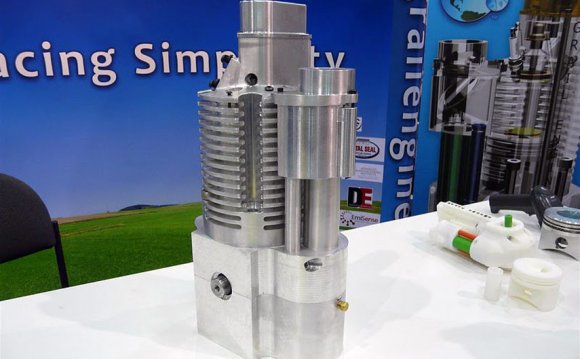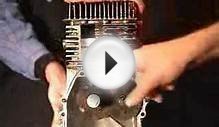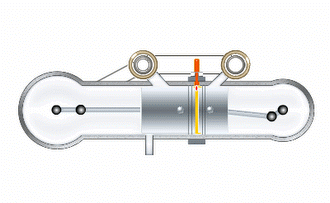
In combustion engines the inner energy set free by combustion ( e.g. of gasioline or Diesel fuel ) is changed partly into mechanical energy. There are several varieties of combustion engine. The most common is the four-stroke Otto Engine, which was invented by the German merchant and engineer Nikolaus August Otto in 1876.
The working mechanism of the four-stroke Otto-Cycle:
The engine's cylinder has got two valves, the Intake valve I and the Exhaust valve E, which are opened and closed by a mechanism (camshaft - not shown here). A crank moves the piston in the cylinder bymeans of a "connecting rod".
The operation of the engine is divided into 4 parts, which are called strokes:
1st stroke (Intake):
The piston sucks in the fuel-air-mixture from the carburetor into the cylinder.
2nd stroke (Compression):
The piston compresses the mixture.
3rd stroke (Combustion):
The spark from the spark plug inflames the mixture. The following explosion presses the piston to the bottom, the gas is operating on the piston.
4th stroke (Exhaust):
The piston presses the exhaust out of the cylinder.
By means of a crank shaft the motion up and down is converted into a rotational motion. Within two rotations of the crank the engine is operating only during a semirotation. Several cylinders are used. They operate in turn, so that the engine runs evenly. In cars mostly 4-cylinder engines are installed (or also 6-cylinder engines).
RELATED VIDEO




 The six-stroke engine is a type of internal combustion engine based on the four-stroke engine, but with additional complexity intended to make it more efficient and reduce emissions. Two types of six-stroke engine have been developed since the 1990s:
The six-stroke engine is a type of internal combustion engine based on the four-stroke engine, but with additional complexity intended to make it more efficient and reduce emissions. Two types of six-stroke engine have been developed since the 1990s:







